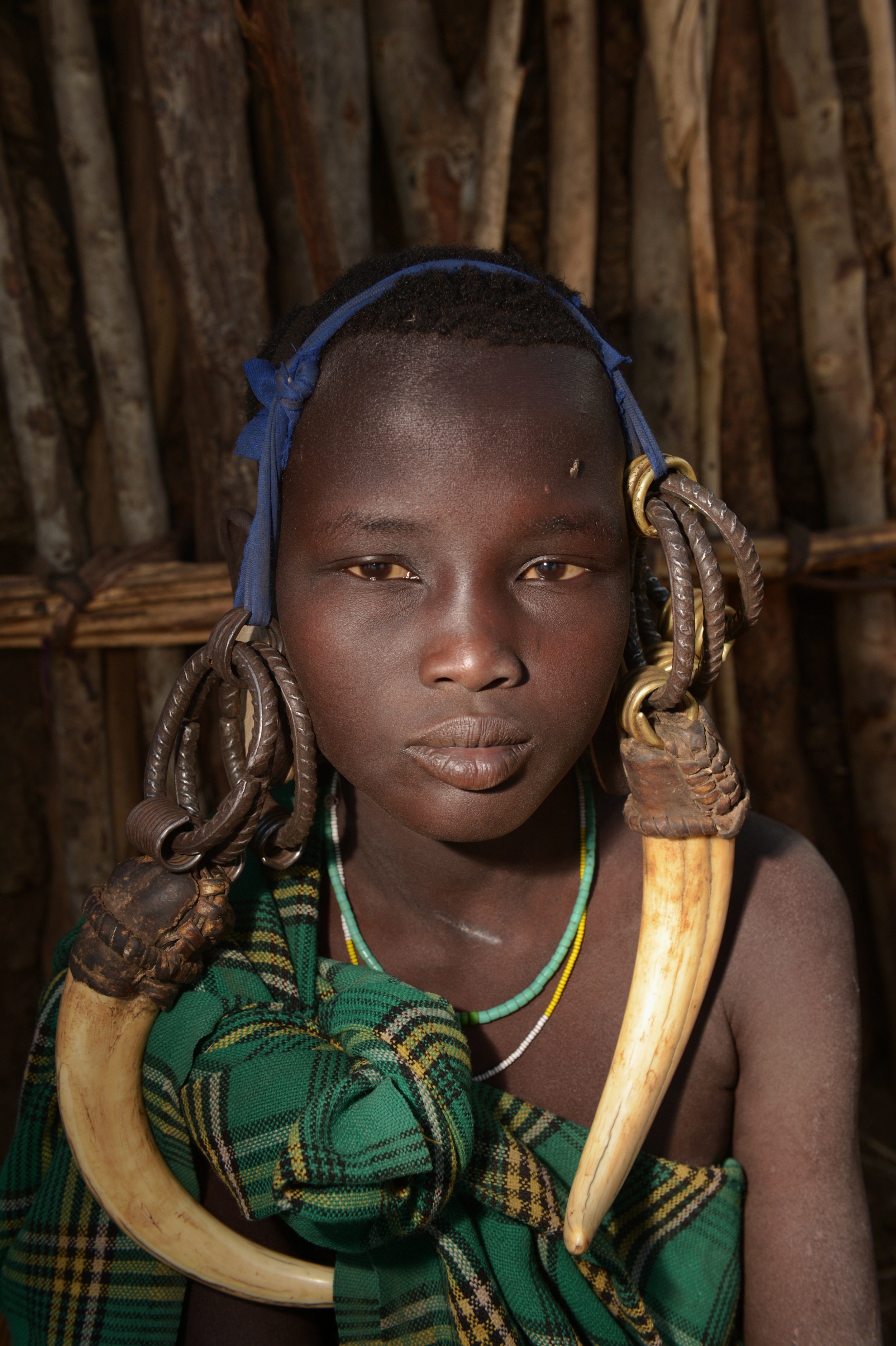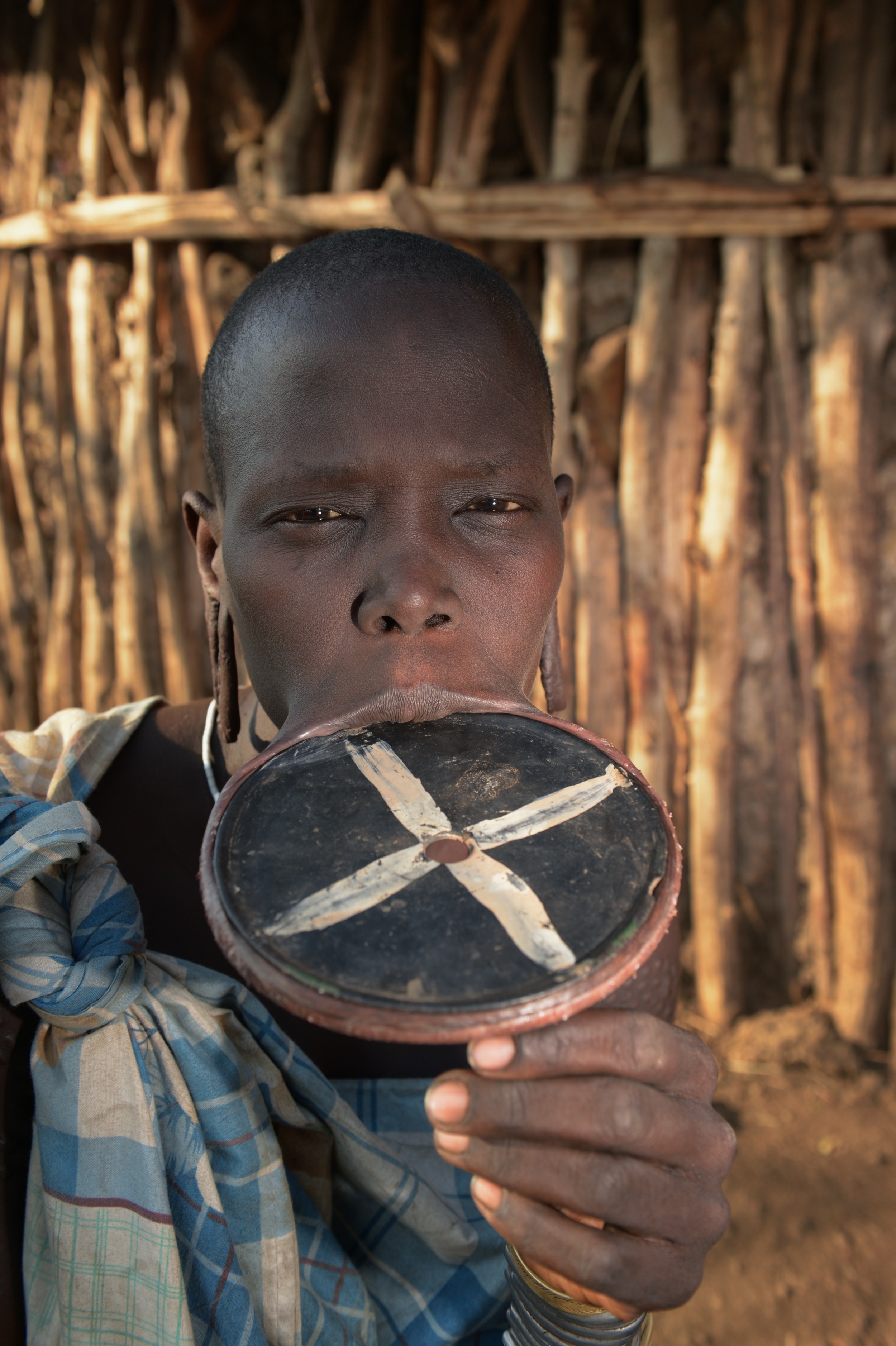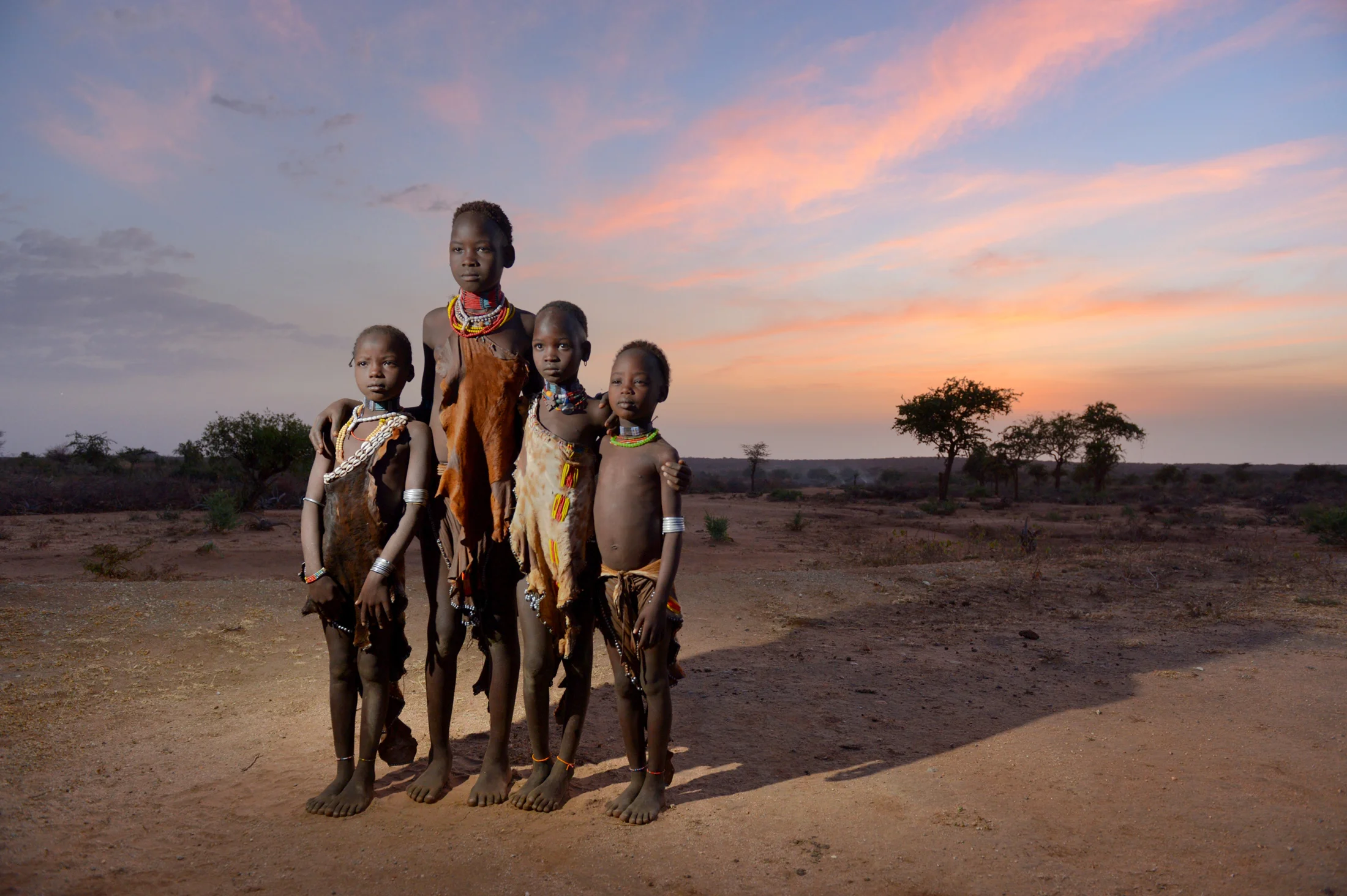

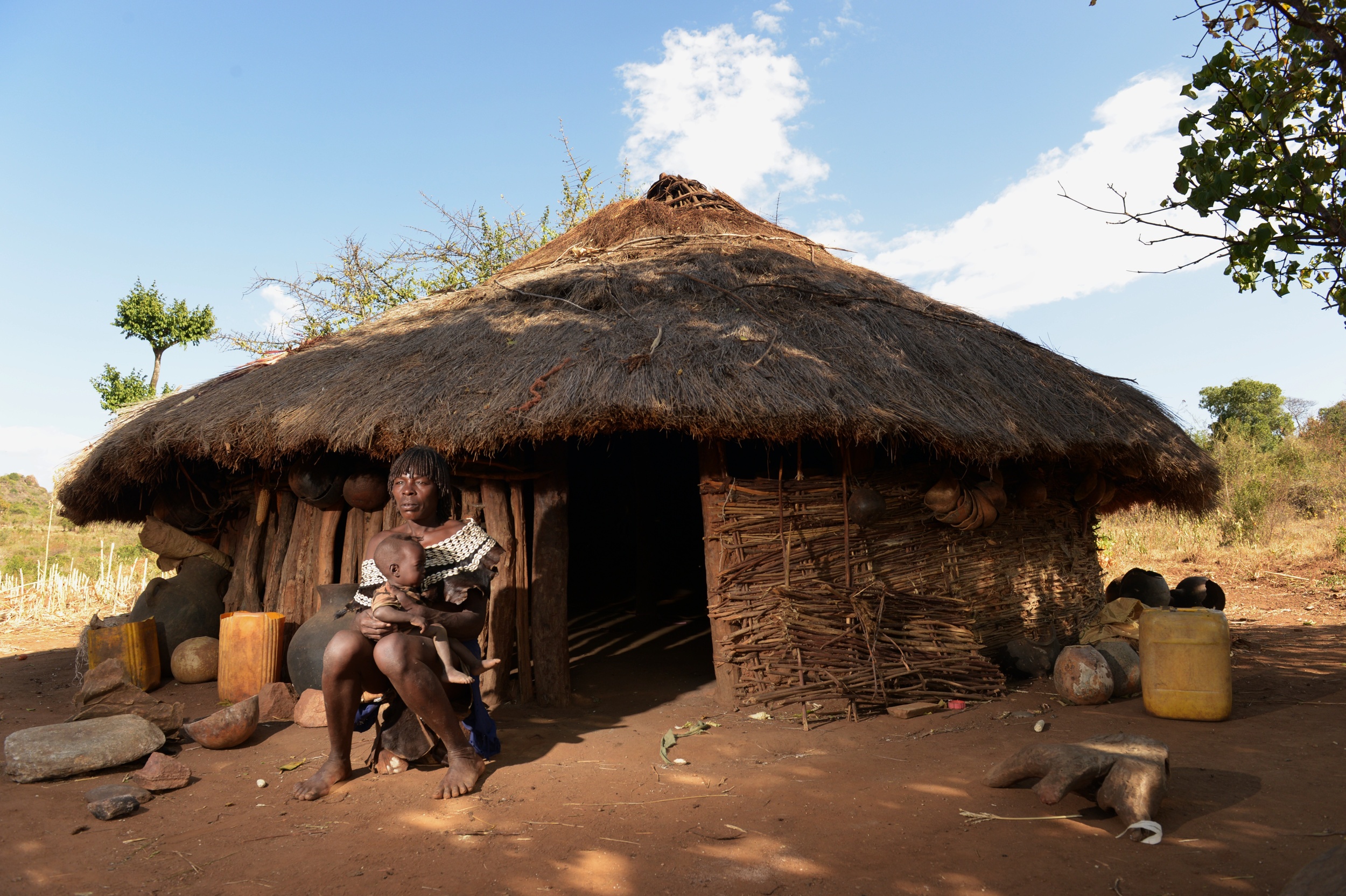

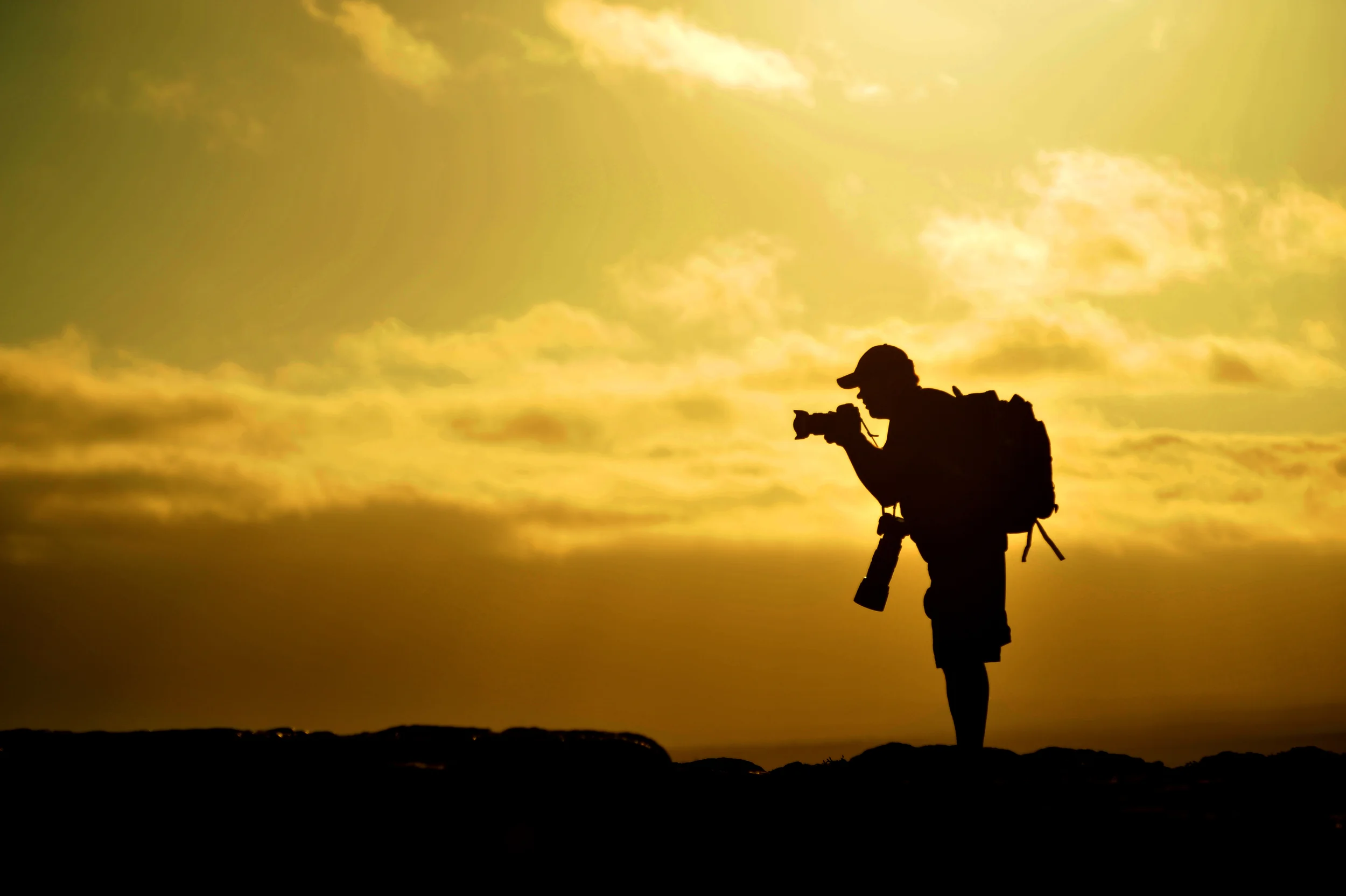



Ethiopia
Ethiopia
LOST TRIBES OF ETHIOPIA
jULy 2020
HIGHLIGHTS
Journey deep with Mirjam Evers within Ethiopia to the four million-year-old cradle of humanity that has not yet seen modernization! Today, the Omo Valley in southern Ethiopia is undoubtedly one of the most unique places on earth because of the sheer diversity of tribal groups that live in this remote area of the Great Rift Valley.
There are approximately forty six ethnic groups just in the Omo Valley. These include the Benna, Ari, Mursi, Bume, karo, Tsemay, Konso, Hammer, Dassecnech, and Borenna, just to mention a few.
A trip designed for the truly adventurous photographer, PQA will take you for the rare experience to photograph the shockingly handsome remote local tribes along the Omo Rift Valley. We will fly in country to avoid very long drives. Absorb Ethiopia’s dynamic scenery while our professional photographer leads you in capturing the heart of this stunning country with breathtaking photos.
explore
Photograph remote local tribes and villages along the Omo Valley including the Konze, Dorze, Karo, Mursi, Hamar and Dassanech people.
Photograph the Mursi people who are the most popular in Ethiopia's Omo Valley, well known for their unique lip plates. The Mursi women paint their bodies and face in white. Men and women both wear colorful jewelry and often carve intricate designs into their bodies using thorns.
Photograph the The Hamar people who traditionally use red ocher clay to braid the hair of their women. Neck rings can indicate if a women is a first or second wife. Hamar men often have more than one wife.
discover
Photograph the Erbore women who are beautiful, wearing black veils (in line with their predominantly Islamic religion), have shaved heads and nude torsos decorated with many colorful beads.
Visit the children of the OMO CHILD home while in Jinka. OMO CHILD rescues and cares for Mingi children from the Omo Valley tribal region of Southwest Ethiopia. Since 2008, they have been rescuing children deemed Mingi (or “cursed”) from certain death, providing them with a safe, loving home and a quality education. OMO CHILD also works to end the devastating practice of Mingi. Please make sure to watch the documentary: http://omochildmovie.com
learn
Camera settings
Location lighting: how to use Quadra Packs, soft boxes, reflectors, and gels
Portrait lighting techniques using one flash
How to tell a story with your images
BOOK NOW

Itinerary
Itinerary
LOST TRIBES OF ETHIOPIA
JULy 2020
Day 1: Depart USA
Depart on your flight from the USA to Addis Ababa. (ADD)
Day 2: Arrive Addis Ababa
Arrival in Addis Ababa, Ethiopia and transfer to the Sheraton Addis Hotel.
Day 3: Fly to Arbaminch
Fly to Arbaminch and drive to the village of the Konso, registered by UNESCO for its amazing landscape and cultural villages. We spend time photographing in the village. Kanta Lodge in Konso.
Day 4-5: Jinka-Mursi Tribes-Omo Child
Drive to Jinka and photograph the Mursi tribe, a close family of the Surma, known for the lip plates worn by some women and the ritual stick-fighting called Donga. The Mursi have fantastic clay facial and body painting.
We will photograph a Donga during our stay and visit the Key Afer village market for an afternoon of browsing and photographing as well as the the Tsemay, Ari and Benna people. Two nights at Eco-Omo Lodge. (B,L,D)
Day 6-7: Turmi-Hamar Tribes
Drive to Turmi. We will visit a few Hamar villages the next few days. The Hamar are known for elaborate body adornments, extensive beadwork, and the male coming-of-age “bull jumping ceremony”, which we are planning on photographing. Two nights at Buska Lodge. (B,L,D)
Day 8-10: Lumale Camp
Drive to Lumale Camp and stay for 4 nights. Take a boat to different villages every day till sunset. Photograph the Kara (Karo) and their villages of Korcho and Duss, with magnificent views over the River Omo. Photograph the Nyangatom tribe, located across the river. In order to get to their villages, we have to cross the crocodile-packed Omo river by boat and then walk. Heavy necklaces and long skirts from goat skins, which are richly decorated, are characteristic for the women. The women also decorate themselves with ornamental scarification on their faces, chests, and bellies.
Drive out to another tribe called the Dassenech (Geleb), who live along the Ethio – Kenyan border. During a ceremony, the Dassanech men dance with large sticks and the women hold wooden batons. A Daasanech man blesses his daughter's fertility and future marriage by celebrating the Dimi. During the Dimi, 10 to 30 cattle are slaughtered. Both men and women wear fur capes while they feast and dance. (B,L,D)
Day 11: Konso People
We will drive to Arbaminch (4 1/2 hours). Along the way, we will visit the village of the Konso, registered by UNESCO for its amazing landscape and cultural villages. Photograph their unusual engraved wooden statues frequently used as grave markers. During the visit, we will have exclusive photographic access to their village, agricultural practices and traditions. After lunch, we will drive to Arbaminch. Overnight at the Paradise Lodge. (B,L,D)
Day 12: Fly from Arbaminch to Addis
We will have a day room at the Sheraton Addis. Farewell dinner at a traditional restaurant in Addis which will be accompanied by a traditional live music performance. Departure to USA in the evening. (B,L,D)
Itinerary is subject to change.

Lodging
Lodging
LOST TRIBES OF ETHIOPIA
jULy 2020
Accommodations based on double occupancy.
A single supplement is paid by participants who specifically request single accommodations, subject to availability.

Facts
Facts
LOST TRIBES OF ETHIOPIA
july 2020
ABOUT ETHIOPIA
Ethiopia is the land of a thousand miles, the country where the two oldest religions co-existed in harmony for centuries, home of the arc of covenant and seed-bed of Christianity & origin of civilization. The land of friendly people with acclaimed hospitality. The only land in Africa that is infamous for its unique calendar and alphabets. Above all things, it is a country of great antiquity with a culture and traditions dating back more than 3000 years.
IS THIS TRIP FOR YOU?
Our days will be filled with endless photo opportunities, starting very early, before sunrise, and ending after sunset. This workshop requires you to be a very well traveled and adventurous photographer who is in good physical condition, and loves to have a great time when traveling.
Please note that this Quest is unique and accommodations outside of Addis, we stay in “best available” hotels. Although there are private bathrooms in the rooms, you must expect only cold-water showers. Outside of Addis, our meals will be simple and lack variety because there are limited resources in the countryside. Ethiopia has some good beers, but the local wines are not distinguished. You may want to bring your favorite alcoholic beverage.
Electricity in hotels in rural areas can be intermittent and sometimes generators are operated only during certain hours of the day. Questers should be prepared for a rugged experience. We ask that you bring flexibility and a spirit of adventure to this unique Quest, and take pleasure in the knowledge that you will be visiting a fascinating country.
SKILL LEVEL
This itinerary was created for all levels of photographers.
ROAD TRAVEL
Road travel in rural Ethiopia is very challenging. Our vehicles may break down or get flat tires on occasion, and that can delay the trip. We use vans for the trip, but they may not compare favorably with the vehicles you may be familiar with from safari countries such as Botswana and Kenya. While we are on our rural road journeys, there are no organized toilet facilities available. We will make “pit stops” from time to time so trip members can get out of the vehicle and find a private spot behind a bush.
PHOTOGRAPHING
As a matter of courtesy, permission should be sought before photographing individuals and in many parts of the country, particularly among the Afar and among the ethnic groups living by the Omo River, people will demand a fee.
CALENDAR
The Ethiopian calendar is seven years behind the calendar we use here in the United States. Furthermore, the Ethiopian calendar has 13 months, which causes an even greater difference between our calendars.
LANGUAGE
There are as many as 84 languages spoken in Ethiopia! Although the official language is Amharic, many Ethiopians speak a local language and are instructed in English.
CLIMATE
Because of elevation, temperature rarely exceeds 25c (77 degrees Fahrenheit). In the Omo Valley it can get considerably hotter.
CLOTHING
Pack light clothes for the daytime and light jacket or sweater for the evenings. A good pair of walking/hiking shoes, hat and sunglasses.
FOOD AND DRINK
The Ethiopian national dish consists of injera, a flat, circular pancake made of fermented dough on top of which are served different kinds of cooked meats, vegetables and pulses. Sauces are generally spiced with berbere, a blend of herbs and spices (including hot peppers) that gives Ethiopian food its characteristic taste.
Vegetarians should try "fasting food" (for devout Ethiopian Orthodox Christians fast days make up nearly half the year), a colorful spread of Salads, vegetables and pulses, devoid of all meat and animal products.
Addis Ababa now boasts of a wide variety of restaurants, and at hotels in tourist sites European style food such as pasta is always available.
MONEY
The Ethiopian currency is the birr, the rate of which against the US dollar is fixed in weekly auctions. Visit for current exchange rates. In order to change birr back to dollars upon leaving the country, visitors will be asked to produce bank receipts.
PASSPORT AND VISA REQUIREMENTS
Visas are required for all visitors to Ethiopia. A Tourist Visa for 2 years costs $70. US citizens can obtain visa on arrival at Bole International Airport (Addis Ababa).
There is a US $20 departure tax for international flights.
Traveling by road allows visitors to experience Ethiopia’s wonderful scenery, but road conditions are generally poor, and mountainous topography in the north will cut speed.
HEALTH AND MEDICAL
All visitors should be in possession of valid yellow fever vaccination certificate. Immunization for Hepatitis A and B, Typhoid and Polio is recommended.
Malaria: in many sites malaria is not a problem because of the elevation. Visit the US Center for Disease Control for more information.
ELECTRICITY
220 volts

Quest Leaders
Quest Leaders
LOST TRIBES OF ETHIOPIA
jULy 2020
MIRJAM EVERS
Mirjam is a New York City based travel photographer specializing in international environmental portraiture, landscape photography and adventure images. Born and raised in the Netherlands, she has photographed in more than 75 countries, including many of the most exotic places in the world. Mirjam's photographs are indicative of her unique capacity to personally connect with diverse cultures and communities. Her eye for location lighting is highly stylized and works to illustrate and heighten the unique characteristics of each international locale. She is able to transcend cultural and language barriers with an intangible spirit that is conveyed in every image. Her work has appeared in AFAR, The New York Times, AARP, Outdoor Photographer, PDN, American Photo, Popular Photography, Digital Photo, Departures, MSN Travel.

Quest Gear
Quest Gear
LOST TRIBES OF ETHIOPIA
jULy 2020
Recommended gear
Computer / Digital Accessories
Laptop with charger and Photoshop CS6 and Lightroom (not mandatory)
Portable hard drives like Lacie hard drives
Card Reader
All cables for drives, computer, card readers, storage devices, etc.
Power converters/adapters for all International Quests
Other
Cover for camera (for shooting in the rain); Fotosharp makes simple, inexpensive covers
Lightweight tripod (carbon fiber)
Cable release (for night shots)
Small headlamp (flashlight)
Your camera’s manual
Camera Gear
Camera and extra body SLR
Battery charger & extra batteries
Memory cards (bring plenty)
Sensor cleaning supplies
Flash with plenty of batteries
Lenses
24-70mm for portraits
20mm prime or 14-24 zoom
70-200mm lens
Polarizing filter(s)
Lint-free cloth to clean lenses and blower ball for dust
Lensbaby if you have one or else you can try ours

Pricing
Pricing
LOST TRIBES OF ETHIOPIA
july 2020
Cost per person
$11,200 based on double occupancy. Single supplement is an additional $1850.
PQA will try to match you with a roommate if you do not opt for a single supplement. However, if a roommate is not available, you will be charged the additional single supplement fee.
Not included
International airline ticket to Addis Ababa
Lunch and dinner in Addis
Gratuities (drivers, guide and local guides)
Excess baggage charges
Karo body-painting & dance event at Lodge
Personal expenses, phone calls, laundry, other meals or services not mentioned in the itinerary
Beverages during meals, alcoholic beverages
Medical and trip insurance (highly recommended)
Included
Domestic flights Arbaminch-Addis-Arbaminch
Accommodations based on double occupancy
Accommodation on full board basis out of Addis (breakfast, lunch, dinner)
All photography fees and permits
All entrance fees
Transfers
Comfortable air-conditioned FWD Toyota Land Cruisers
Professional English speaking guide
Portage fees
All local guides
We highly recommend that you purchase travel insurance.




